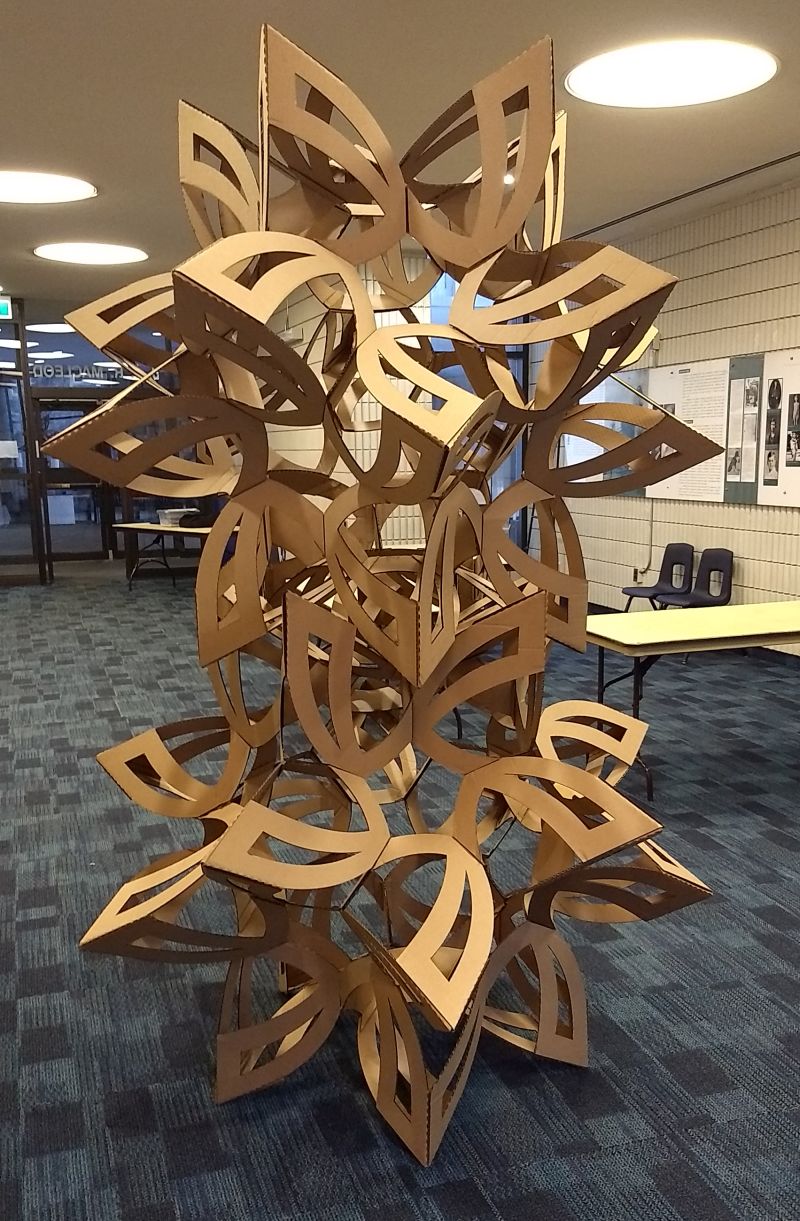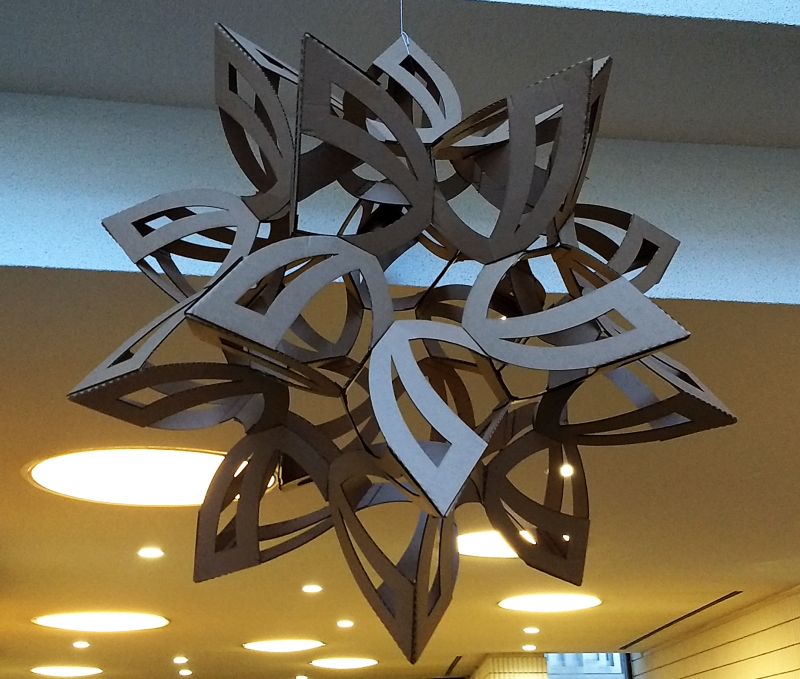George W. Hart
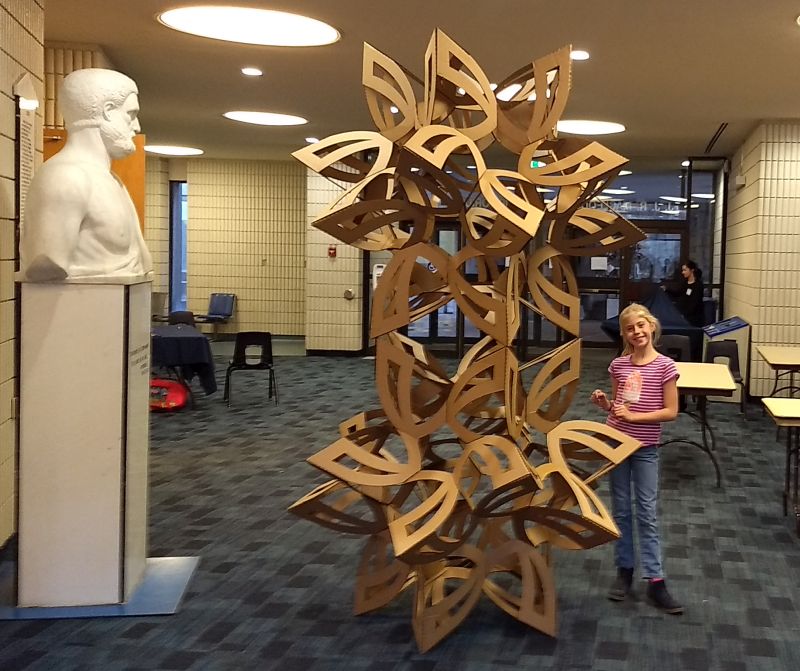
In December 2018, I was invited by the Royal Canadian Institute of Science in Toronto to give a public workshop and here's what we made. There are two mirror-image copies in cardboard of a sculpture originally called Frabjic when I designed it, but which I also adapted as a classroom construction and then called Autumn.
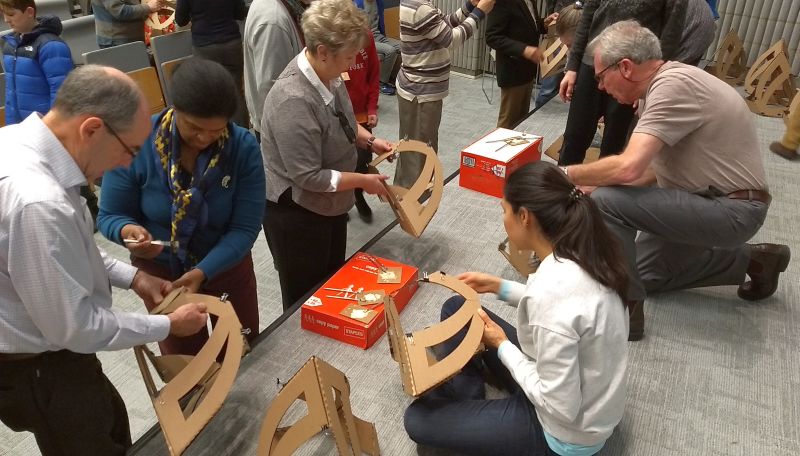
Each copy consists of 120 laser-cut
parts that are connected together with small black
binder clips before gluing them together. In the
initial step, we join three large pieces together to
make a pyramidal module, then add three small structural
components that provide internal bracing.
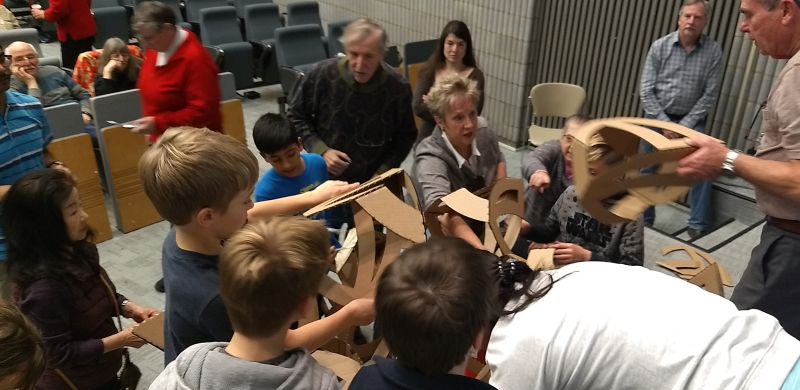
Then we join the modules together to make a cycle of five and keep adding more modules until complete. Many people can work together an all sides at once, clamping and gluing all the components.

Then we join the modules together to make a cycle of five and keep adding more modules until complete. Many people can work together an all sides at once, clamping and gluing all the components.
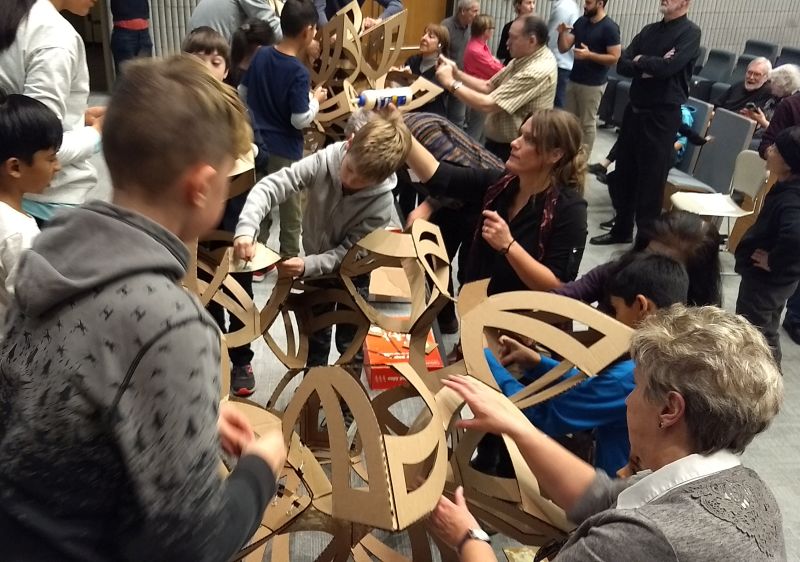
Both versions are being assembled at the same time in the two sides of the room, so we need to be careful not to mix the left-handed pieces with the right-handed pieces. Their shapes are congruent, but the flap is folded oppositely. After 15 minutes, the glue is dry and the clamps can be removed.
We hung one up so it can spin freely on a
string.
For detailed instructions and templates
for creating large cardboard mathematical sculptures, see
this
Making Math Visible page. To make a
smaller wooden version of this design, see this
page. For more insight into this particular
design and ways to make your own modifications of it, see
the last workshop on this
page. To make your own copy at this scale, use
this laser-cutting template.
You can get a very good sense of the structure from a video of it in
motion.
